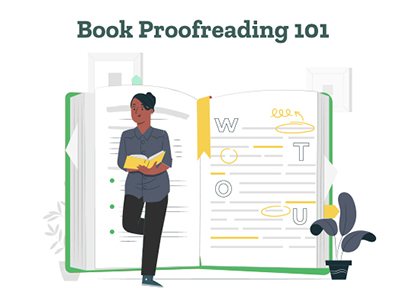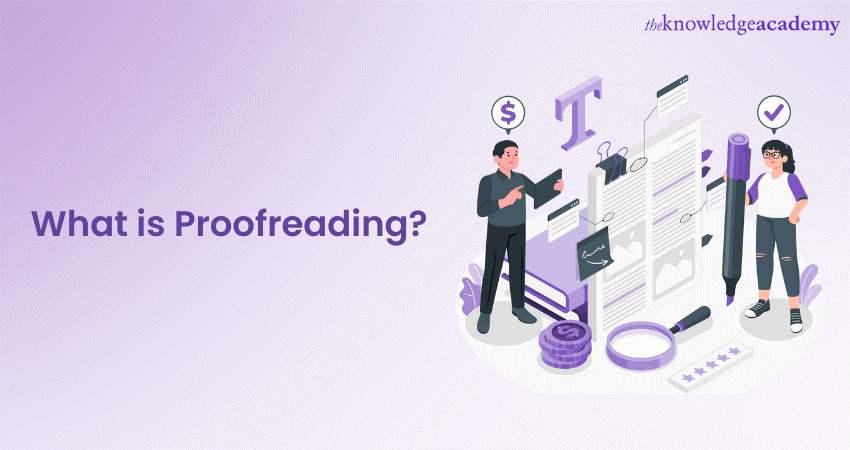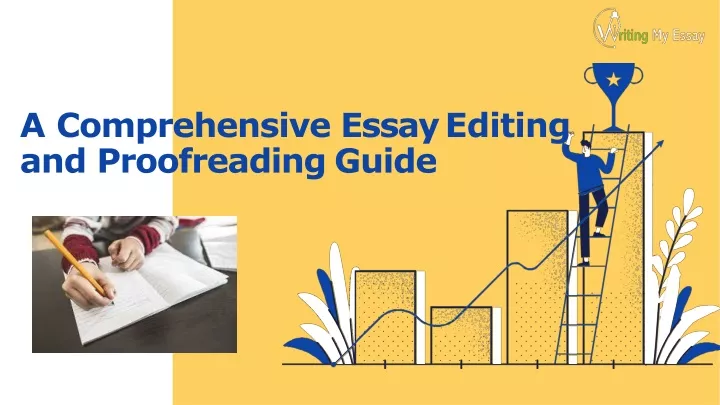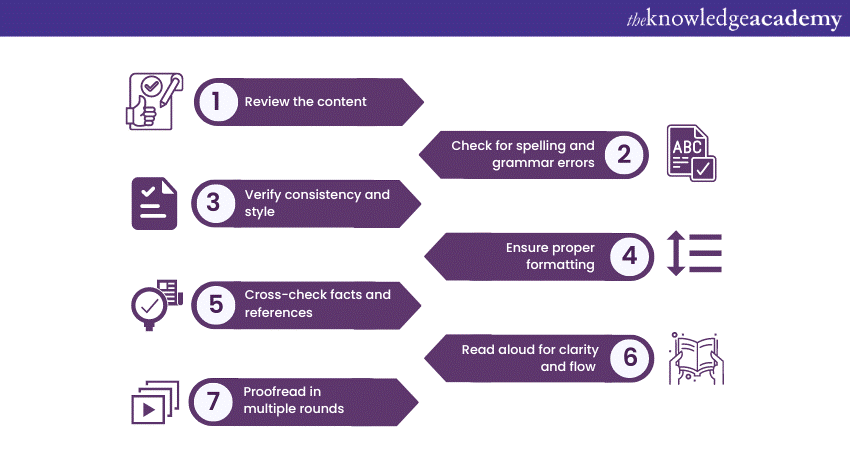Navigating the Path to Proofreading: A Comprehensive Guide for Beginners
Related Articles: Navigating the Path to Proofreading: A Comprehensive Guide for Beginners
Introduction
With enthusiasm, let’s navigate through the intriguing topic related to Navigating the Path to Proofreading: A Comprehensive Guide for Beginners. Let’s weave interesting information and offer fresh perspectives to the readers.
Table of Content
Navigating the Path to Proofreading: A Comprehensive Guide for Beginners

The digital age has ushered in a new era of content creation, with countless individuals and businesses relying on online platforms to share their ideas and engage their audiences. This surge in online content has created a demand for skilled proofreaders, individuals who meticulously refine written materials for clarity, accuracy, and professionalism. While experience is often sought in this field, the path to becoming a successful proofreader is accessible to individuals without prior experience. This article provides a comprehensive guide for those eager to embark on this rewarding career path.
Understanding the Role of a Proofreader
Proofreading is the final stage of the editing process, focusing on identifying and correcting errors in grammar, spelling, punctuation, and formatting. It involves a meticulous examination of written text, ensuring that it adheres to established standards and presents information clearly and accurately. Proofreaders act as guardians of language, ensuring that written materials convey the intended message and reflect the author’s professionalism.
Benefits of Pursuing Proofreading as a Career
The field of proofreading offers several compelling advantages:
- Flexibility: Proofreading can be undertaken remotely, providing the flexibility to work from home or any location with a stable internet connection. This allows for greater control over one’s schedule and work environment.
- Demand: The ever-growing volume of online content fuels a constant demand for skilled proofreaders. This ensures a steady stream of work opportunities, catering to diverse industries and content formats.
- Skill Development: Proofreading requires a keen eye for detail, strong language skills, and a thorough understanding of grammar and punctuation rules. This process enhances these skills, making individuals more effective communicators in various contexts.
- Financial Opportunities: While entry-level proofreading positions may offer lower pay, gaining experience and building a reputation can lead to higher-paying projects and even full-time opportunities.
- Contribution to Quality: Proofreaders play a vital role in ensuring the quality and credibility of written materials. Their work contributes to the effective communication of ideas, strengthening the impact of written content.
Essential Skills for Aspiring Proofreaders
While formal education is not always a requirement, certain skills are crucial for success in proofreading:
- Strong Language Skills: A deep understanding of grammar, punctuation, and spelling is essential for identifying and correcting errors effectively.
- Attention to Detail: Proofreading demands meticulousness, the ability to spot even subtle inconsistencies and errors within written materials.
- Critical Thinking: Proofreaders must analyze text beyond surface-level errors, considering the overall clarity and flow of the content.
- Time Management: Efficiently managing time and meeting deadlines is critical, especially when handling multiple projects simultaneously.
- Adaptability: Proofreaders must be able to adapt to different writing styles, content formats, and client preferences.
Building a Foundation: Resources for Beginners
For those seeking to enter the proofreading field without prior experience, several resources can provide a strong foundation:
- Online Courses: Numerous online platforms offer comprehensive proofreading courses, covering grammar, punctuation, style guides, and industry best practices. These courses provide structured learning and often include practical exercises to hone skills.
- Self-Study Materials: Books, articles, and online resources on grammar, punctuation, and style guides are readily available for self-directed learning. These materials offer in-depth explanations and examples to enhance understanding.
- Practice, Practice, Practice: The key to becoming a proficient proofreader lies in consistent practice. Start by editing personal writing, volunteer for proofreading projects, or participate in online proofreading communities.
Finding Proofreading Jobs for Beginners
While experience is often a prerequisite, several avenues offer opportunities for aspiring proofreaders:
- Freelancing Platforms: Websites like Upwork, Fiverr, and Freelancer connect freelancers with clients seeking proofreading services. These platforms allow beginners to build a portfolio and gain experience through smaller projects.
- Online Job Boards: Dedicated job boards for writers and editors, such as ProBlogger and MediaBistro, frequently list proofreading positions, some catering specifically to beginners.
- Direct Contact: Reach out to businesses, bloggers, or authors directly, offering your proofreading services. Building relationships and showcasing your skills can lead to opportunities.
- Networking: Connect with other proofreaders, editors, and writers through online communities or professional organizations. Networking can provide valuable insights, potential job leads, and support.
Developing a Portfolio: Showcasing Your Skills
A strong portfolio is essential for attracting clients and showcasing your proofreading abilities. Here’s how to build a compelling portfolio:
- Volunteer Proofreading: Offer your services to friends, family, or local organizations. This allows you to gain experience and build a portfolio of work.
- Online Proofreading Challenges: Participate in online proofreading challenges or contests, showcasing your skills and receiving feedback from experienced professionals.
- Create Sample Edits: Proofread existing articles, blog posts, or documents, highlighting the errors you corrected and the improvements you made.
- Website or Online Profile: Create a website or profile on platforms like LinkedIn, showcasing your skills, experience, and sample work.
Setting Rates and Negotiating Fees
Determining appropriate rates for proofreading services requires careful consideration:
- Research Industry Standards: Investigate the average rates charged by experienced proofreaders in your area or niche.
- Factor in Experience: Beginners may start with lower rates, gradually increasing them as they gain experience and build a reputation.
- Project Complexity: Consider the length, complexity, and turnaround time of the project when setting rates.
- Negotiation Skills: Be prepared to negotiate rates with clients, ensuring fair compensation for your services.
Marketing Your Proofreading Services
Once you have a portfolio and established rates, marketing your services is crucial for attracting clients:
- Online Presence: Create a website or social media profiles dedicated to your proofreading business.
- Networking: Attend industry events, join online communities, and connect with potential clients.
- Content Marketing: Create blog posts, articles, or other content showcasing your expertise and attracting clients.
- Referral Programs: Encourage satisfied clients to refer your services to others.
FAQs for Beginners in Proofreading
Q: Do I need a degree or certification to be a proofreader?
A: While a degree in English, writing, or a related field can be beneficial, it is not always a requirement for entry-level proofreading positions. Certifications, such as the Proofreading & Editing Certificate from the Professional Editors Guild, can enhance credibility and demonstrate your commitment to the field.
Q: How do I find clients for proofreading work?
A: Freelancing platforms, online job boards, direct contact with businesses, and networking are all effective ways to find clients. Building a strong portfolio and marketing your services are crucial for attracting work.
Q: How much can I earn as a proofreader?
A: Proofreading rates vary based on experience, project complexity, and industry. Beginners may earn lower rates, gradually increasing them as they gain experience.
Q: What are the best tools for proofreading?
A: While basic word processing software is sufficient, dedicated proofreading tools like Grammarly, ProWritingAid, and Hemingway Editor can enhance accuracy and efficiency.
Q: How do I ensure my proofreading is accurate?
A: Develop a systematic approach, using a checklist or style guide to ensure consistency. Utilize proofreading techniques like reading aloud and reverse reading to catch errors.
Tips for Success in Proofreading
- Continuous Learning: Stay updated on grammar rules, style guides, and industry trends through ongoing learning and professional development.
- Build a Network: Connect with other proofreaders, editors, and writers to exchange knowledge, gain insights, and access opportunities.
- Seek Feedback: Request feedback from clients or experienced proofreaders to identify areas for improvement and refine your skills.
- Stay Organized: Maintain a system for managing projects, deadlines, and client communication to ensure efficient workflow.
- Promote Your Services: Actively market your services through online platforms, networking events, and content marketing efforts.
Conclusion: Embracing the Proofreading Journey
Becoming a successful proofreader requires dedication, perseverance, and a passion for language. While experience is valuable, individuals without prior experience can navigate this rewarding career path with a combination of self-study, practical training, and a proactive approach to finding opportunities. By developing essential skills, building a strong portfolio, and marketing their services effectively, aspiring proofreaders can establish themselves in this growing field and contribute to the clarity and accuracy of written communication in the digital age.








Closure
Thus, we hope this article has provided valuable insights into Navigating the Path to Proofreading: A Comprehensive Guide for Beginners. We thank you for taking the time to read this article. See you in our next article!